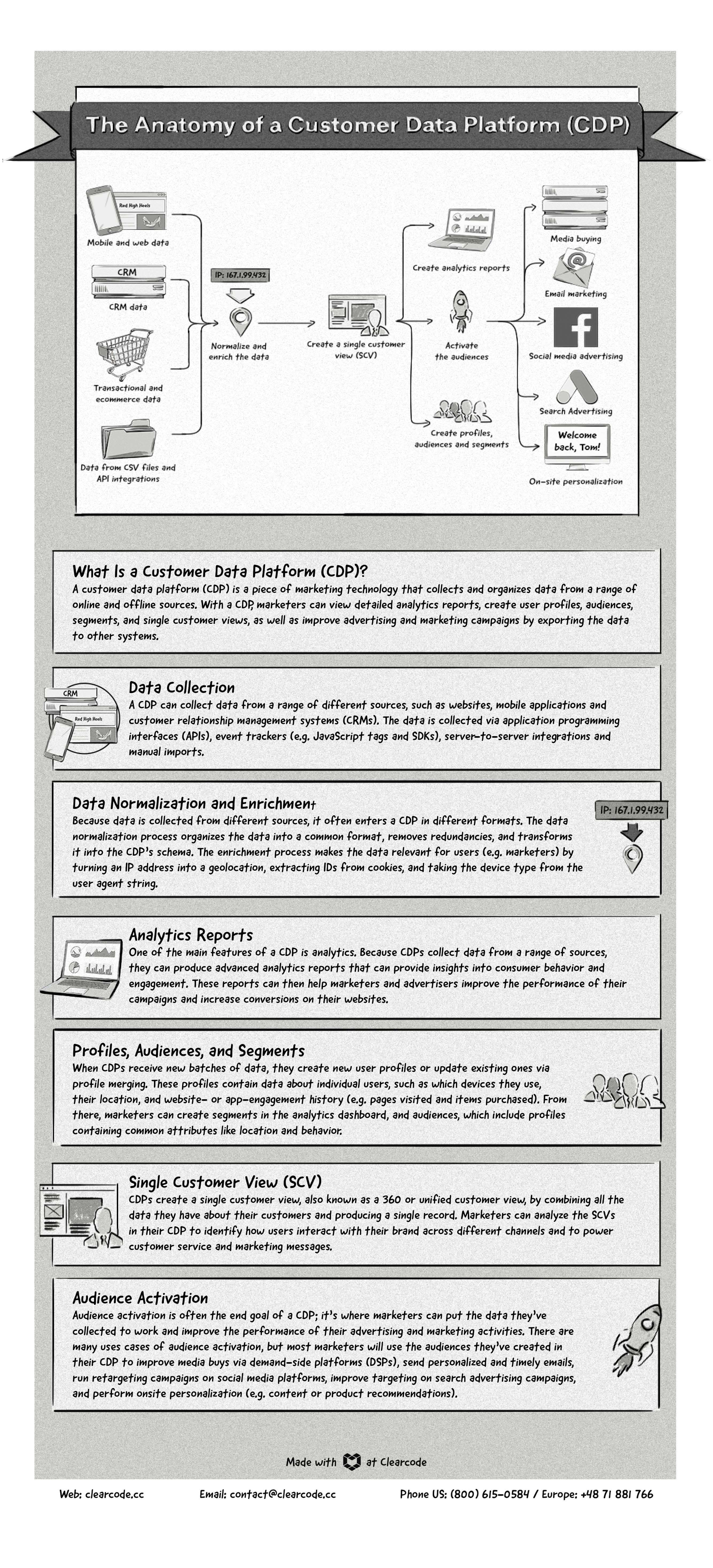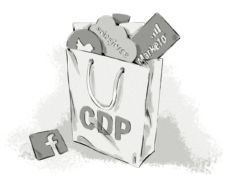Most people know what benefits customer data platforms (CDPs) bring to a company’s marketing activities, but few know what features, components, and processes make up a CDP.
We recently worked with one of our MarTech development teams to produce an infographic that illustrates just that.
Click on the infographic to enlarge it.

What Is a Customer Data Platform (CDP)?
A customer data platform (CDP) is a piece of marketing technology that collects and organizes data from a range of online and offline sources.
With a CDP, marketers can view detailed analytics reports, create user profiles, audiences, segments, and single customer views, as well as improve advertising and marketing campaigns by exporting the data to other systems.
Data Collection
A CDP can collect data from a range of different sources, such as websites, mobile applications and customer relationship management systems (CRMs).
The data is collected via application programming interfaces (APIs), event trackers (e.g. JavaScript tags and SDKs), server-to-server integrations and manual imports.
Data Normalization and Enrichment
Because data is collected from different sources, it often enters a CDP in different formats. The data normalization process organizes the data into a common format, removes redundancies, and transforms it into the CDP’s schema.
The enrichment process makes the data relevant for users (e.g. marketers) by turning an IP address into a geolocation, extracting IDs from cookies, and taking the device type from the user agent string.
Analytics Reports
One of the main features of a CDP is analytics. Because CDPs collect data from a range of sources, they can produce advanced analytics reports that can provide insights into consumer behavior and engagement.
These reports can then help marketers and advertisers improve the performance of their campaigns and increase conversions on their websites.
Profiles, Audiences, and Segments
When CDPs receive new batches of data, they create new user profiles or update existing ones via profile merging. These profiles contain data about individual users, such as which devices they use, their location, and website- or app-engagement history (e.g. pages visited and items purchased).
From there, marketers can create segments in the analytics dashboard, and audiences, which include profiles containing common attributes like location and behavior.
Single Customer View (SCV)
CDPs create a single customer view, also known as a 360 or unified customer view, by combining all the data they have about their customers and producing a single record.
Marketers can analyze the SCVs in their CDP to identify how users interact with their brand across different channels and to power customer service and marketing messages.
Audience Activation
Audience activation is often the end goal of a CDP; it’s where marketers can put the data they’ve collected to work and improve the performance of their advertising and marketing activities.
There are many uses cases of audience activation, but most marketers will use the audiences they’ve created in their CDP to improve media buys via demand-side platforms (DSPs), send personalized and timely emails, run retargeting campaigns on social media platforms, improve targeting on search advertising campaigns, and perform onsite personalization (e.g. content or product recommendations).
The post The Anatomy of a Customer Data Platform (CDP) [infographic] appeared first on Clearcode.
The original post is at MarTech Archives – Clearcode




Leave a Reply